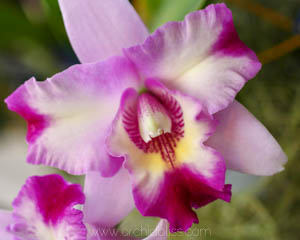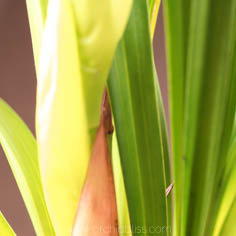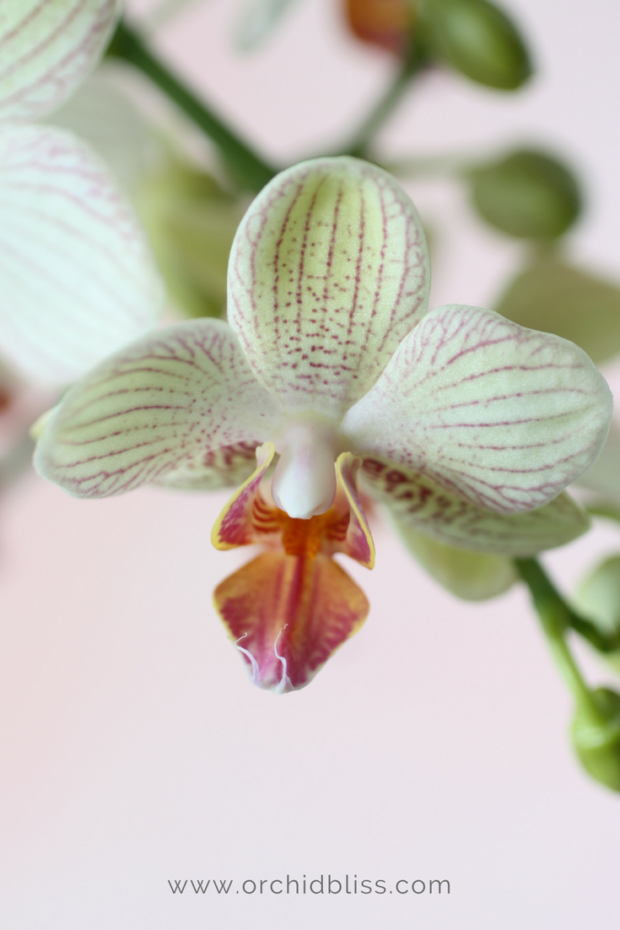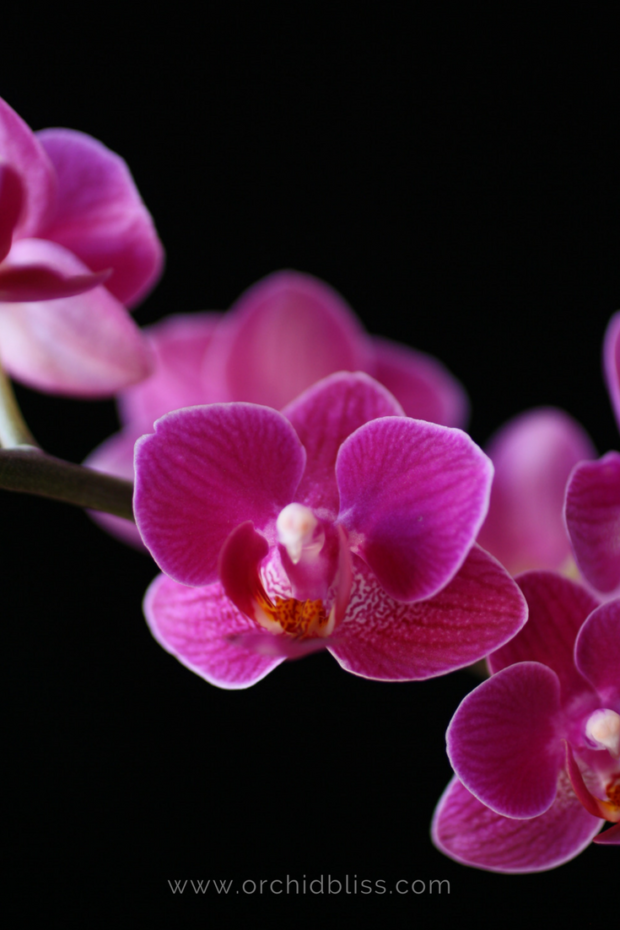
When I’m in the market for a new orchid – especially if I’m at an orchid show and plan to increase my orchid collection – I arrive armed with a list of orchids that are most likely to grow well in my growing environment.
I’ve compiled a list of 25 beginner orchids so you don’t have to search several websites to find out. If you are wondering which orchids are the easiest to grow, these are the ones you can put at the top of your list.
Unless otherwise noted, these beginner orchids grow well in warm to intermediate temperatures and enjoy around 50% humidity.

Some of the links on this page may be affiliate links. Click here to learn more.
1- Aspasia
as-PAY-see-uh
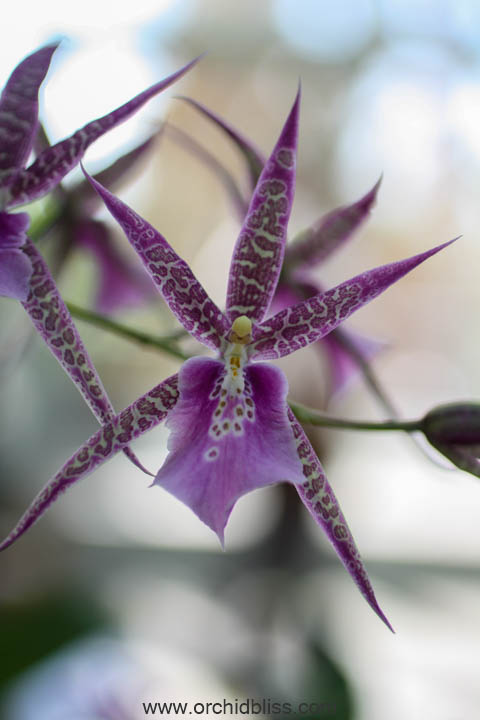
These are fairly small orchids 6-10” tall with moderate light requirements- making them ideal for the windowsill. They grow well on mounts, potted or in baskets. They are among the easiest members of the oncidium alliance to grow. The flowers starlike are large and colorful with a pronounced lip.
- Beginner Species – Aspasia lunata, A. principissa
- Distribution – Aspasia orchids are found throughout tropical Central and South America.
2- Brassavola
bra-sah-VOH-luh

Brassavola, the so-called lady of the night orchid, for its evening perfume-like fragrance. This easy-to-grow orchid performs well mounted, in a slatted basket, or in a well-draining pot grown near a bright windowsill. For those who want a first go at a mounted orchid, the drought-tolerant Brassavola is an excellent choice.
- Beginner Species – Brassavola nodosa. The hybrid B. ‘Little Stars’ is particularly popular.
- Distribution – Brassavola orchids grow from Mexico to Central America, the West Indies to Brazil, and Argentina.
- Care Card – To learn more about Brassavola orchids and their care, CLICK HERE.
3- Brassia
BRASS-ee-uh
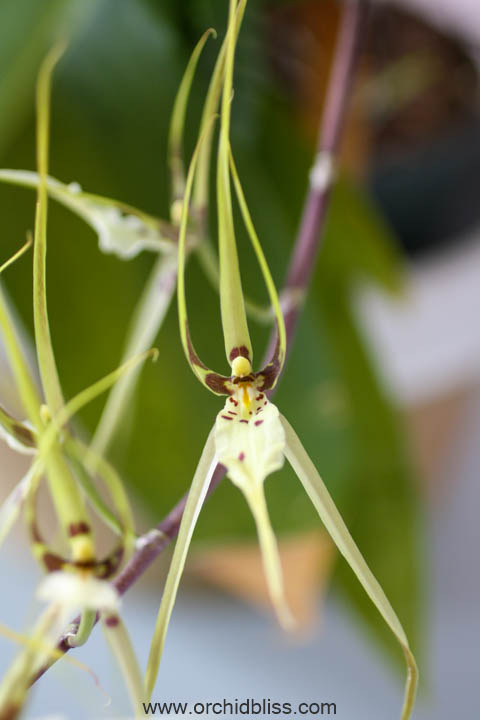
The Brassia is an easy to grow orchid that blooms and reblooms like nobody’s business. BONUS: this orchid has a lovely fragrance.
The Brassia orchid has both a divine fragrance and abundant flowers. Brassia is nicknamed the spider orchid, as the long petals resemble long-legged spiders. Though, I think it’s nicer to think of it as the ballet orchid, as the long, graceful sepals and petals bring to mind a row of ballerinas caught mid-pirouette. In the spring, when actively growing, give this orchid plenty of food and water. You’ll be amazed as flower spikes continuously appear, each one trimmed with an elegant line of flowers.
To help you further, start by downloading my free cheat sheet to see where to cut the orchid flower spike after the blooms have faded to trigger re-blooming. Click here, for the cheat sheet. It’ll be super helpful.
- Beginner Species – Brassia caudata, Brassia arcuigera (longissima), Brassia verrucosa
- Distribution – Florida, Mexico, the Caribbean, Brazil, and Bolivia.
- Care Card – To learn more about Brassia’s care requirements, CLICK HERE.
4- Bulbophyllum
bulb-oh-FILL-um
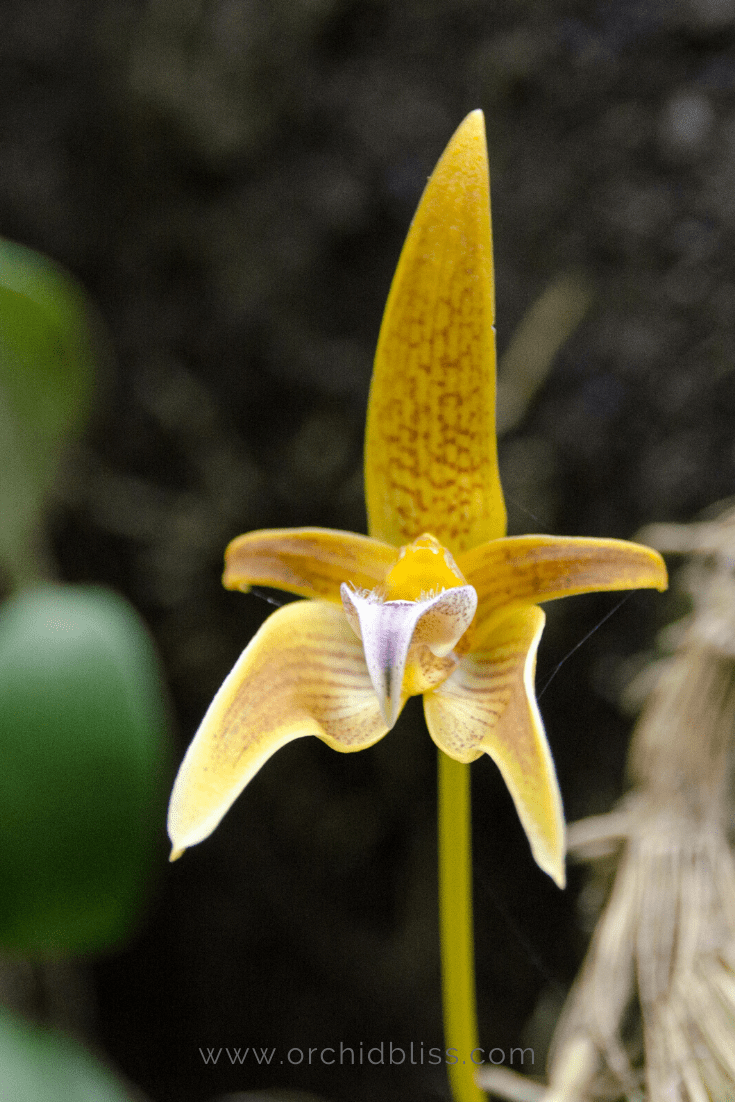
The flowers of Bulbophyllum range in shape and size from beautiful to bizarre. Bulbophyllum is the largest genera of orchids. As a whole, they are adaptable, resilient orchids. These orchids tend to enjoy year-round water and are best planted on a mount, a slatted basket, or a shallow, wide pot as they grow along a creeping rhizome.
- Beginner Species – Bulbophyllum lobbii, B grandiflorum, B. barbigerum and two lovely hybrids Daisy Chain and Elizabeth Ann.
- Distribution – South and Central America, the Caribbean, equatorial Africa, Madagascar, Asia, Australia, New Guinea, and New Zealand.
5- Calanthe
cal-ANTH-thee
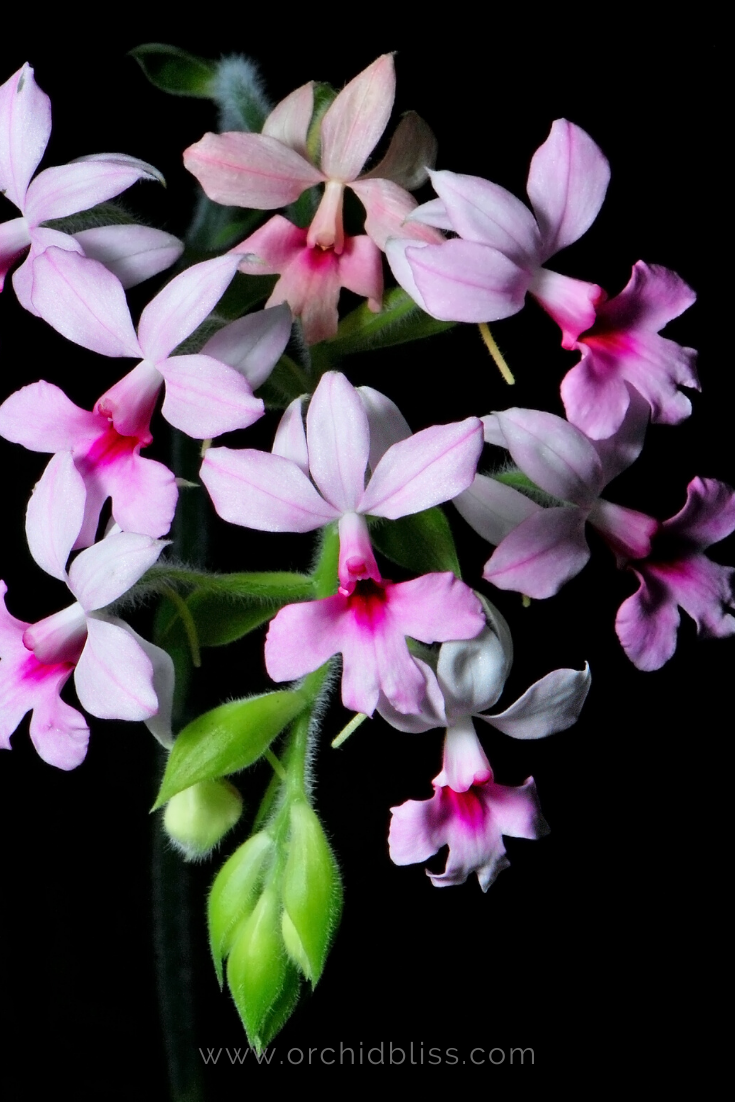
There are both evergreen, called Eucalanthe, and deciduous, called Preptanthe, varieties of Calanthe orchids. The deciduous types will lose their leaves in the fall, or the beginning of the dry season. Their flowers are vibrant and rich.
- Beginner Species – Calanthe vestita, C. rosea, C. discolor
- Distribution – Tropical and subtropical Asia, Africa, and Australia, from Mexico to Columbia and the Caribbean.
6- Cattleya
CAT-lee-uh
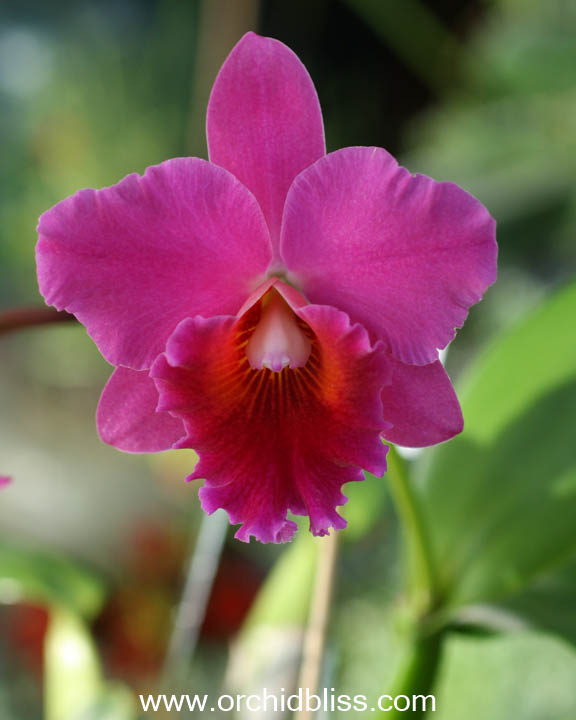
The Cattleya is the quintessential corsage orchid. Their flowers are immediately recognized as an orchid. Their flowers are large, long-lasting, and immensely satisfying to grow. Because Cattleyas have been heavily hybridized, there is a broad range of colors, shapes, and sizes. Despite the broad range of Cattleyas, their care requirements are fairly universal. It’s a well-known fact that everyone should grow at least one Cattleya. If growing space is tight, grow miniature varieties.
- Beginner Species – Cattleya aurantiaca, C. intermedia, C. mossiae, C. skinneri and their many hybrids
- Distribution – Tropical Central and South America
- Care Card – For more information on how to care for Cattleya orchids, CLICK HERE.
7- Coelogyne
see-LODGE-in-ee
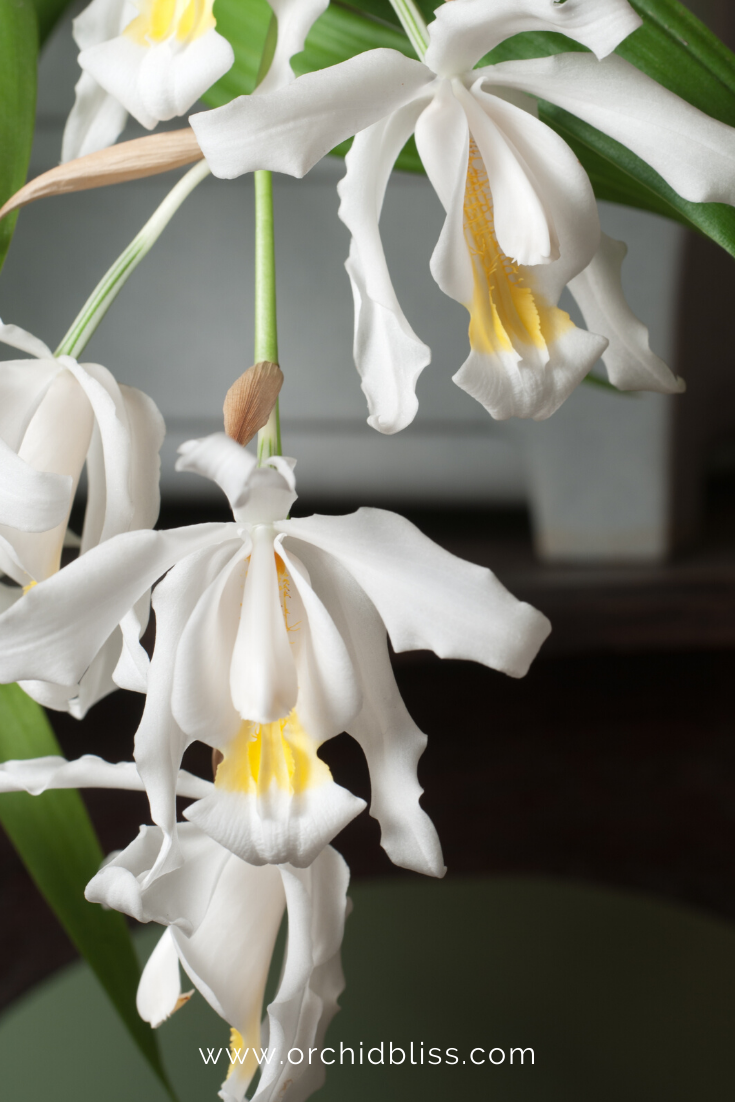
These orchids sport long-lasting, fragrant flowers and many require cool winter temperatures. If you go leave town for a few weeks in the winter and turn down your thermostat to around 50 F / 10 C you should definitely consider growing coelogyne orchids.
- Beginner Species – Coelogyne cristata, C. fimbriata, C. flaccida, C.lawrenceana
- Distribution – India to Southeast Asia, southwest China, the Philippines, Indonesia, New Guinea, islands of the south, and east Pacific.
8- Cycnoches
sic-NO-cheese
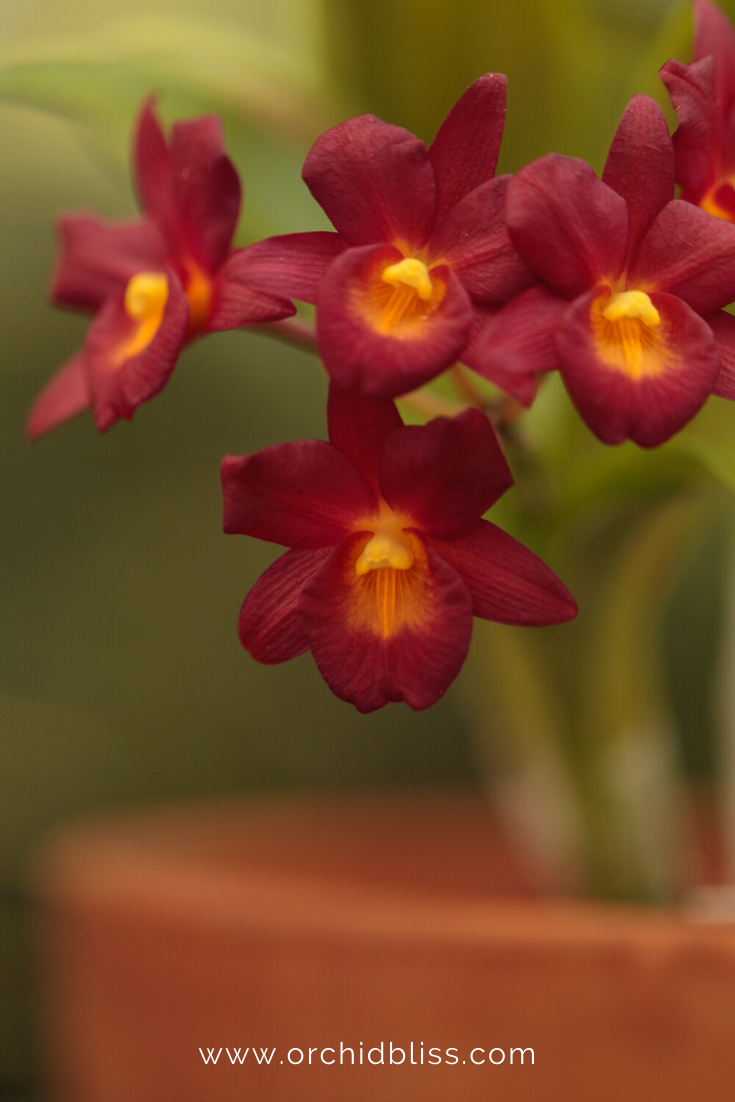
Cycnoches also called the swan orchid for the lip and column of some species resemble a swan with the neck curved backward and the wings folded. This orchid produces richly colored flowers from red and yellow to green and white. The fragrant flowers attract Euglossine bees. Interestingly, Cycnoches produce male and female flowers on separate flower spikes.
- Beginner Species – Cycnoches loddigesii, C. chlorochilon, C. warscewiczii
- Distribution – Tropical southern Mexico to southern Brazil and Bolivia
9- Cymbidium
sim-BID-ee-um
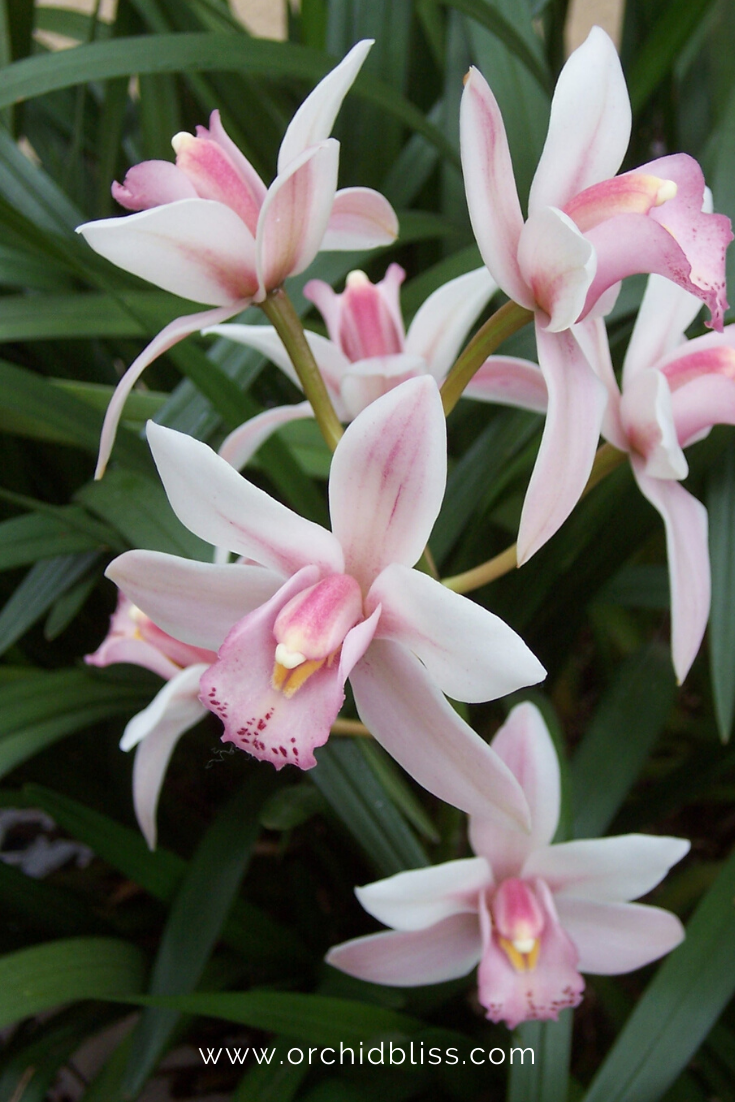
The small-flowered tropical species of Cymbidiums, also called Asian miniature cymbidiums, are best suited for beginner orchids as they don’t require a chilling period to trigger flower spikes and enjoy warm temperatures year-round – perfect for the in-home orchid grower. The larger standard-sized Cymbidiums are beautiful, but take up an enormous amount of space.
- Beginner Compact Hybrids – Cymbidium Enzan Current ‘Aquarius’, C. Lovely Moon “Crescent’ C. Royal Red ‘princess Nobuko’
- Distribution – Northern India, China, Japan, South Pacific Islands, and Australia
10- Dendrobium
den-DROH-bee-um

Dendrobium orchids are a joy to grow. The flowers are long-lasting and beautiful. Personally, I don’t know if I will ever feel like I have enough Dendrobiums. There will always be room for just one more. Dendrobium is a large and diverse genus of orchids with varying care requirements. To simplify the genus, Dendrobiums have been divided into sections, or types. Because the easiest dendrobiums to grow are bigibbum, phalaenanthe/phalaenopsis, and Australian-type dendrobiums, let’s discuss those.
- Beginner Species and Hybrids – Dendrobium bigibbum and their hybrids, D. enobi, D. classic white ‘Memoria Yukie Nakano’, D ‘Theodore Takiguchi x Aisaki White’, D. Burana, D. Ramirez, D. kingianum, D. Micro Chip
- Distribution – Tropical and subtropical Asia, islands of the south Pacific, New Guinea and Australia
- Care Card – To learn more about how to care for Dendrobium orchids, CLICK HERE.
11- Dendrochilum
den-dro-KIE-lum
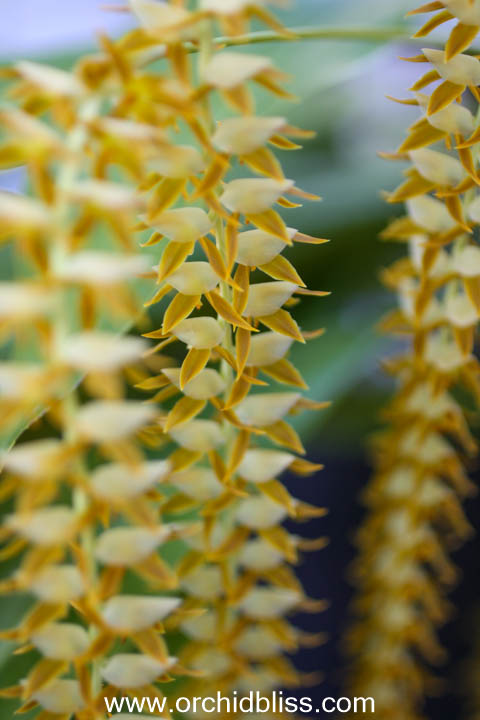
The flowers on these compact, well-proportioned plants are small, but profuse, looking for all the world like an artfully designed flower arrangement. Long, hanging or arching, fragrant chains of flowers characterize many orchids of this genus. Happily, Dendrochilum orchids are easy to grow.
- Beginner Species – Dendrobium cobbianum, D. filiforme, D. glumaceum, D. wenzelii
- Distribution – Southeast Asia, Taiwan, New Guinea, Borneo, the Philippines and Sumatra
12- Doritis
dor-EYE-tis
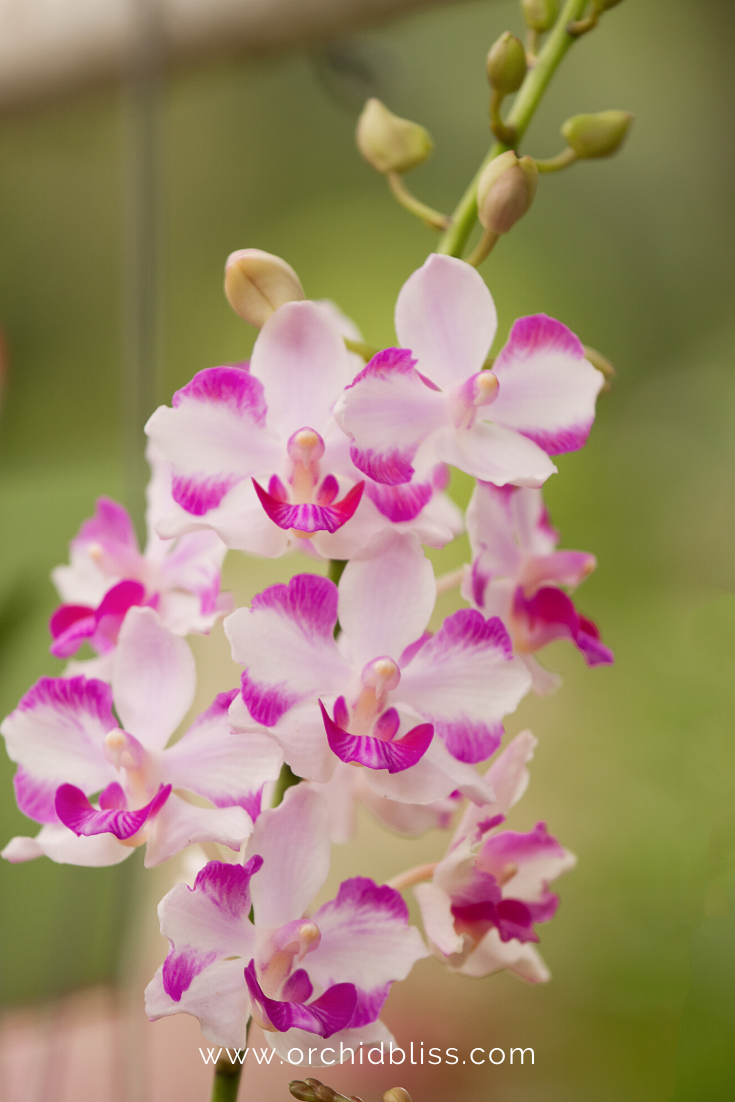
This is a small easy-care genus of orchids that is now included in the genus Phalaenopsis – with which it has been heavily hybridized. The purple to pink medium-sized flowers grows on erect, branching inflorescences.
- Beginner Species – Doritis pulcherrima
- Distribution – Sri Lanka, Nepal, Burma, Thailand, Indo-China, Malaya, and Sumatra
13- Encyclia
en-SIC-lee-uh

Encyclia orchids have been confused with Epidendrum, though their flowers have a more prominent lip and their pseudobulbs are more rounded and their leaves are thicker. Encyclia flowers are 1-2” wide, blooming on long, branching spikes. Keep potting mix evenly moist when actively growing and bright light for healthy, freely blooming Encyclia.
- Beginner Species – Encyclia chocleata, E. fragrans, E. nemorale, E. tampense
- Distribution – Florida, Mexico, Central, and South America
14- Epidendrum
eh-pee-DEN-drum
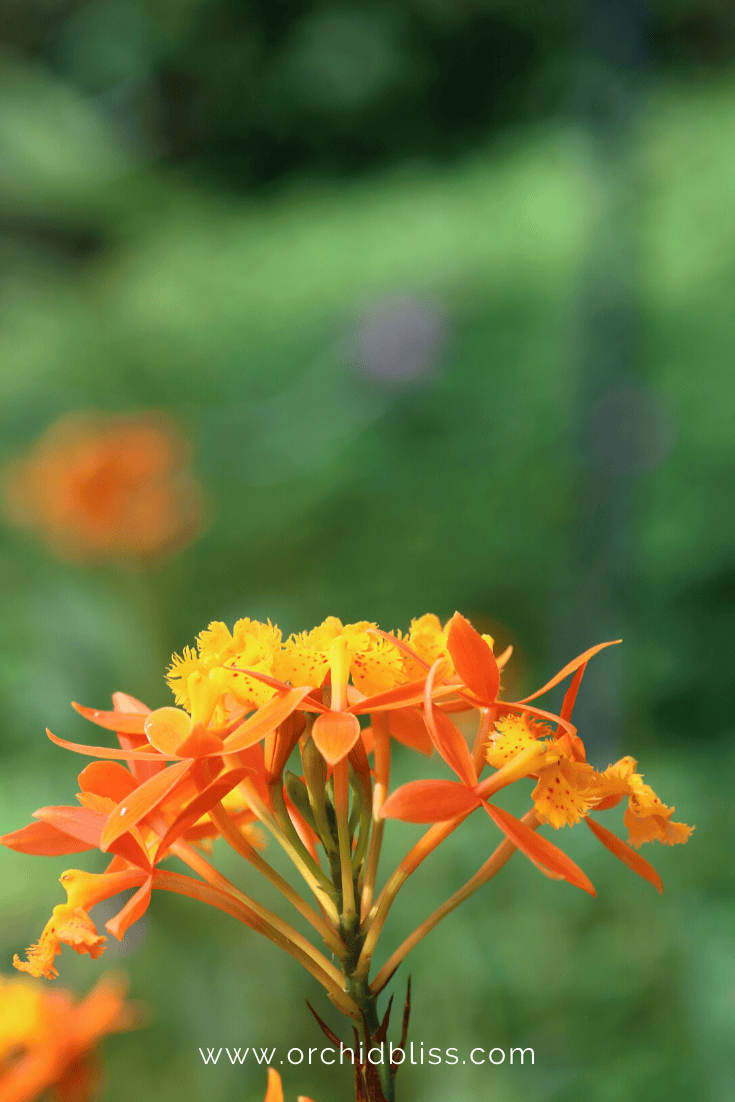
The easiest orchids within the Epidendrum are what are known as reed stem types. Healthy plants are compact with several heads of flowers.
- Beginner Species – Epidendrum, radicans, E. ibaguense
- Distribution – Tropical America
15- Laelia
LAY-lee-uh
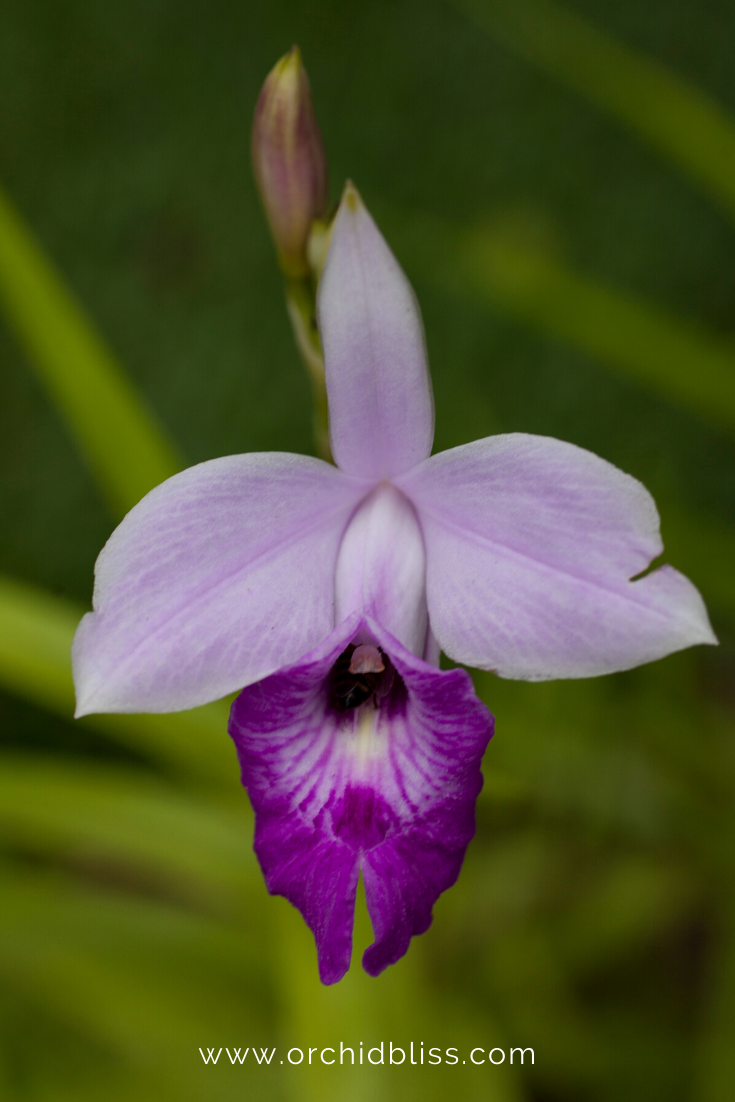
Laelias have long been hybridized with the Cattleya genus. Mini Cattleyas likely have Laelia parentage. The flowers are large and Cattleya-like and the plants are resilient making them an ideal orchid.
Unlike more orchids mentioned in this article, these orchids like cool temperatures in the winter – with intermediate temperatures the rest of the year.
Note: Rupicolous laelias have been moved to the Cattleya genus. Likewise, the Laelia purpurata is now Cattleya purpurata.
- Beginner Species – Laelia albida, L. anceps, L. autumnalis, L. rubescens
- Distribution – Tropical America Brazil
16- Ludisia
loo-DIS-ee-uh
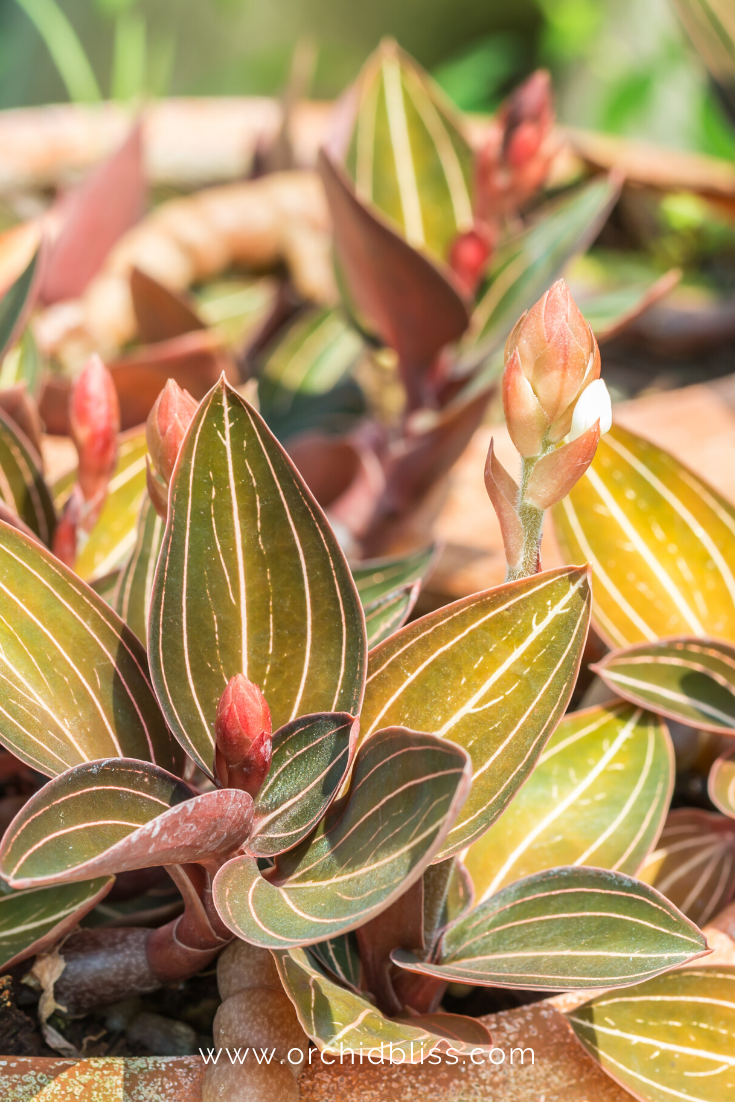
Ludisia, commonly known as Jewel orchids are the only orchids I am aware of that the orchid is grown, not for its flowers but for its uniquely beautiful foliage. In fact, some growers pinch off the flowers to encourage more robust plants. These orchids thrive in low light and high humidity. These orchids are perfect choices for terrariums. Stems with leaves cut and rooted.
- Beginner Species – Ludisia discolor
- Distribution – China, Southeast Asia, northeast India
- Care Card – To learn more about how to care for Jewel orchids, click here.
17- Lycaste
lye-CAST-ee
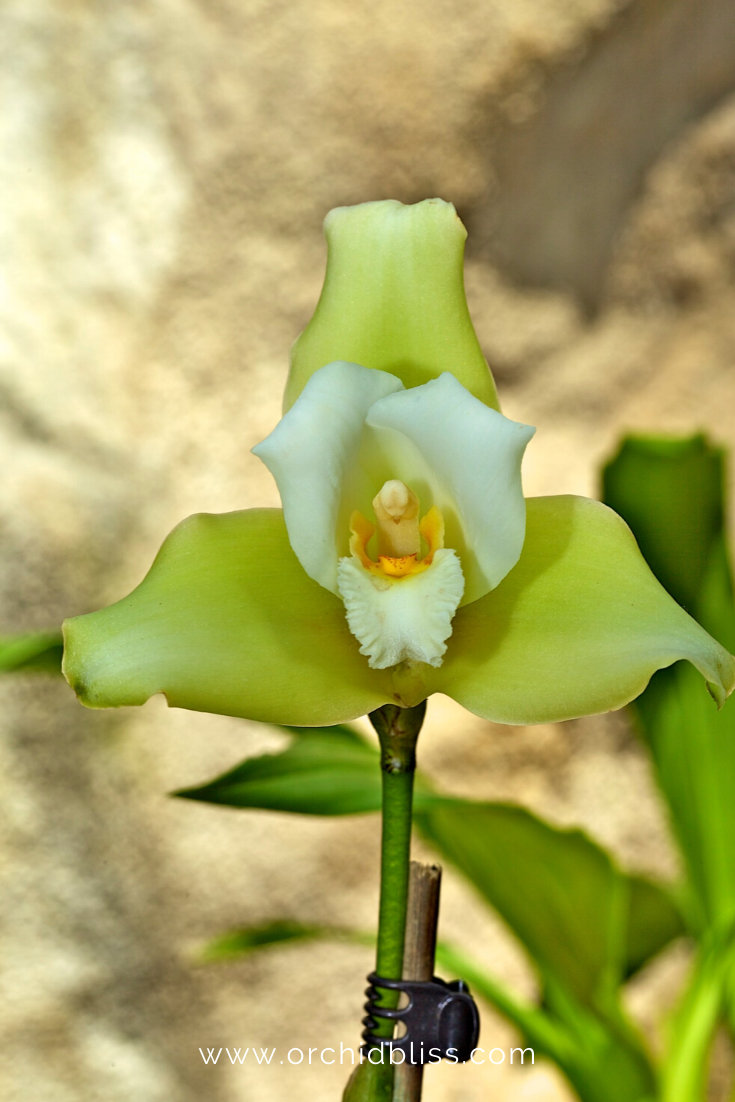
Lycastes are simply marvelous orchids. While not all are suited for the beginner, we will focus only on the easier varieties from Mexico and Central America. While these beginner species are smaller than their larger counterparts, they are not to be overlooked.
- Beginner Species – Lycaste aromatica, L. cochleata, L. deppei
- Distribution – Mexico, Central America, tropical South America
18- Maxillaria
max-ill-AIR-ee-uh
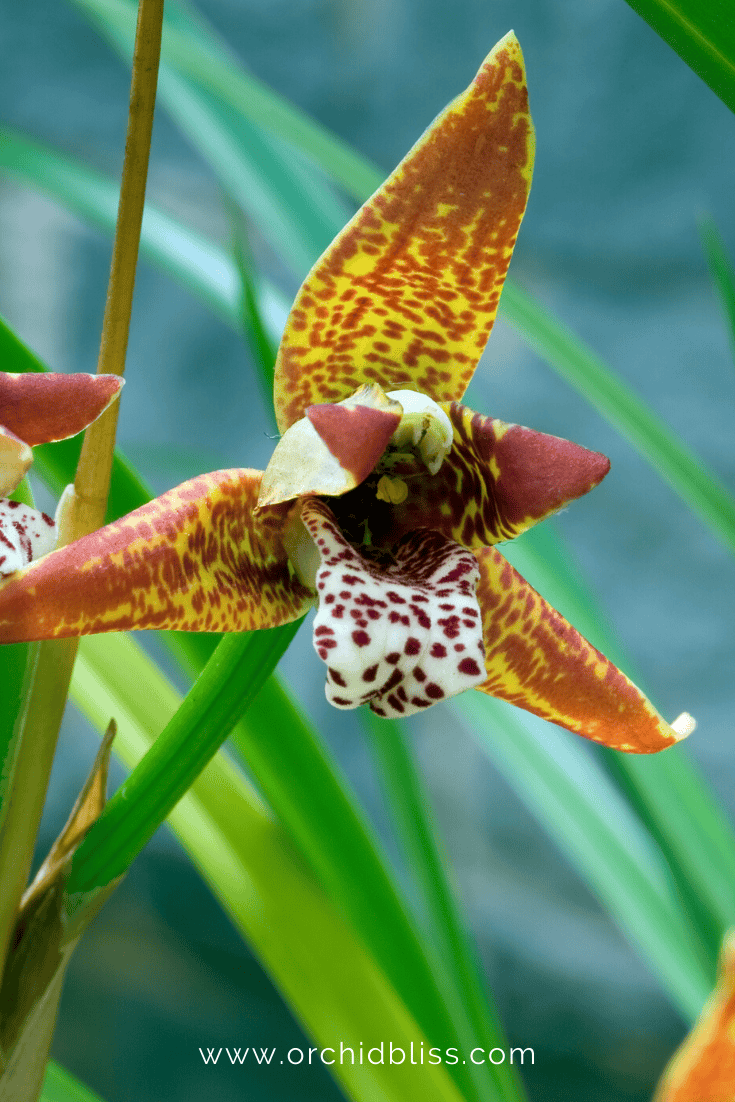
Like many other orchid genera, some species are easier to grow than others. We will focus on the introductory species. Maxillaria orchids flowers are triangular shaped with 3 prominent sepals and 2 smaller petals. The flowers range in size from ½” to over 6”.
- Beginner Species – Maxillaria cucullata, M. tenuifolia, M. uncata
- Distribution – Florida, West Indies, Mexico, Central America, Brazil, northern Argentina
- Care Card – To learn more about Malillaria tenuifolia care, CLICK HERE.
19- Miltonia
mill-TONE-ee-uh
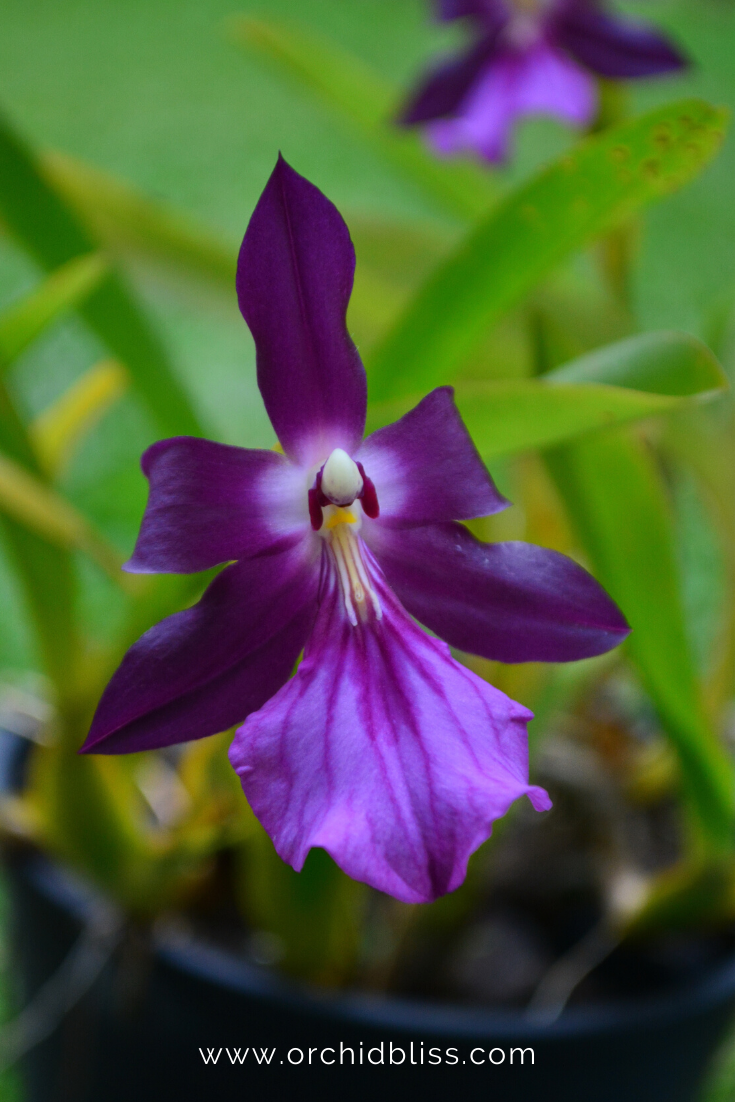
Miltonia orchids are the warm growing counterparts to the cooler growing Miltoniopsis – making the Miltonia an easier orchid to grow than the Miltoniopsis. The 3” flowers are characterized by pointed petals and sepals and a very large lip.
- Beginner Species – Miltonia spectabilis
- Distribution – Brazil
20- Oncidium
on-SID-ee-um
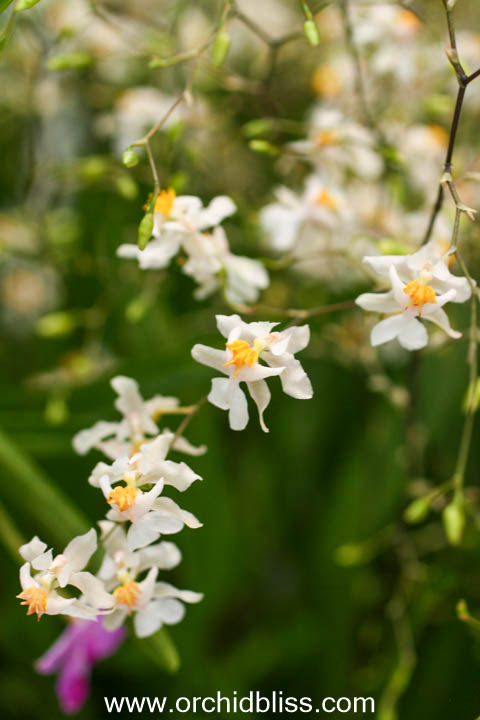
The fragrance from an Oncidium will fill a room. Some varieties will bloom more than once a year. For chocolate-smelling flowers try, ‘sharry baby’ and for a vanilla fragrance, try ‘twinkle’.
The Oncidium also called the dancing lady is a large and diverse species. The Psychopsis orchid, a member of the Oncidium family) has the distinction of reputedly inciting Orchid Delirium during the Victorian era.
Most Oncidiums prefer intermediate temperatures during the day with a temperature drop at night.
- Beginner Species and Hybrids – Oncidium leucochilum, O. longipes, O. ornithorhynchum, O. pulchellum and its hybrids, O. twinkle, O. Sharry Baby
- Distribution – South Florida, Central America, Caribbean, and South America
- Care Card – To learn more about Oncidium care requirements, CLICK HERE.
21- Paphiopedilum
paff-ee-oh-PED-ih-lum
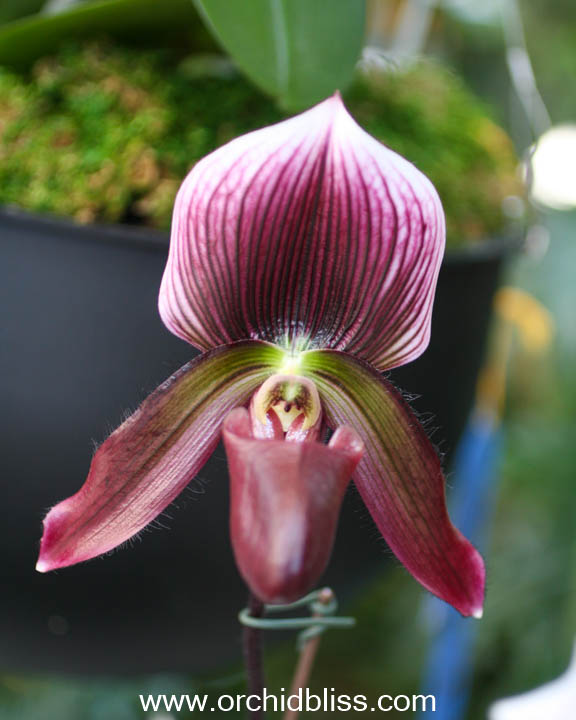
If you don’t have a lot of light, grow a Paphiopedilum These easy to grow orchids don’t mind repotting and blooms once a year and many varieties have lovely dappled leaves.
The Paphiopedilum, also known as the Slipper orchid, so named after its large lip that resembles a lady’s slipper. You will find this distinctive orchid rewarding and easy to grow. Unlike most orchids, you can re-pot the slipper orchid any time. A flower will emerge from each fan of leaves. Some Paphs have pleasing mottled leaves. I’ve long-admired the spreading varieties and am happy to say that I now have one in my collection – and it’s putting out several flowers!
- Beginner Species – Paphiopedilum callosum, P. hirsutissimum, P. sukhakulii, and their hybrids
- Distribution – tropical Asia, and pacific islands
- Care Card – To learn more about Paphiopedilum care requirements, CLICK HERE.
22- Phalaenopsis
fal-ah-NOP-sis

The glorious Phalaenopsis is the gateway drug to orchids.
The Phalaenopsis, nicknamed the moth orchid, is tough. Millions of these plants are shipped and sold every year. If properly cared for, these plants will bloom year after year – sometimes more than once a year. Just because these orchids are wildly popular does not make them any less amazing. I grow several specimens and it seems that at least one of them is always blooming.
- Beginner Species – Phalaenopsis amabilis, P. equestris and P. amboinensis and their numerous hybrids.
- Distribution – Across Asia and India, the Philippines, Borneo, and Malaysia
- Care Card – To learn more about caring for Phalaenopsis care requirements, CLICK HERE.
23- Sobralia
so-BRALee-ah
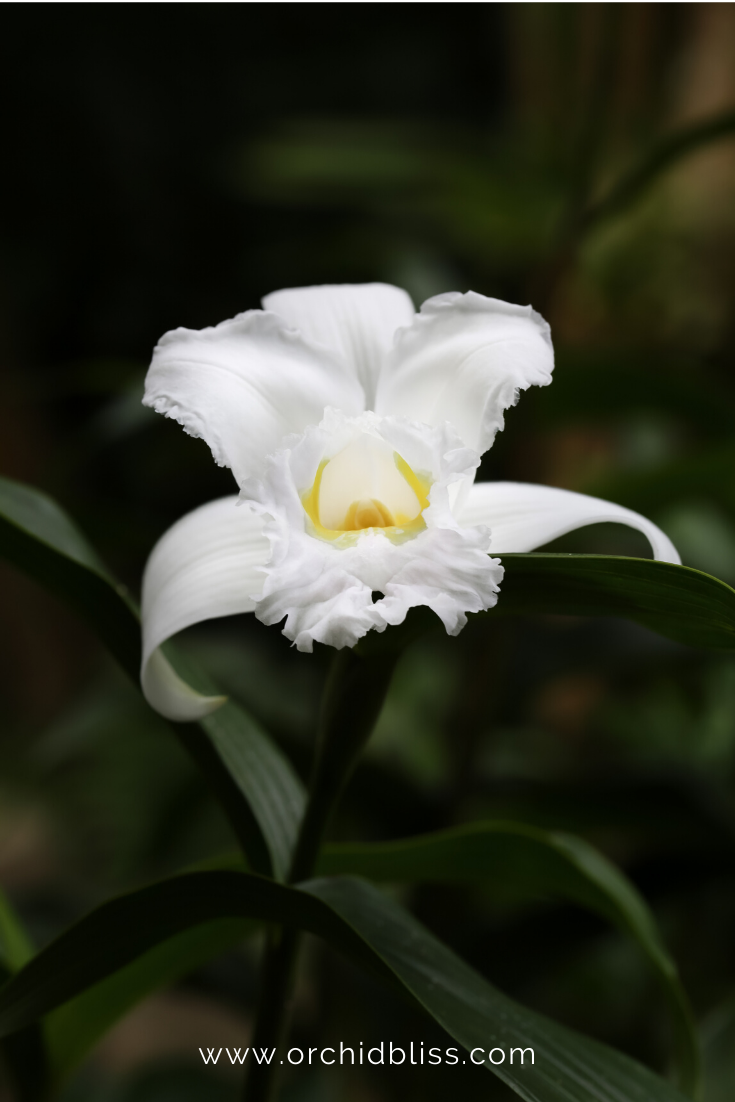
Sobrailia flowers look similar to a Cattleya. Though the flowers are short-lived they continuously bloom for an extended length of time. Beginners should focus on growing the Ephemeral group of Sobrailias as the Field group requires lower temperatures.
- Beginner Species – Sobralia macrantha
- Distribution – Tropical America, Mexico, Central, and South America
24- Stanhopea
stan-HOPE-ee-uh
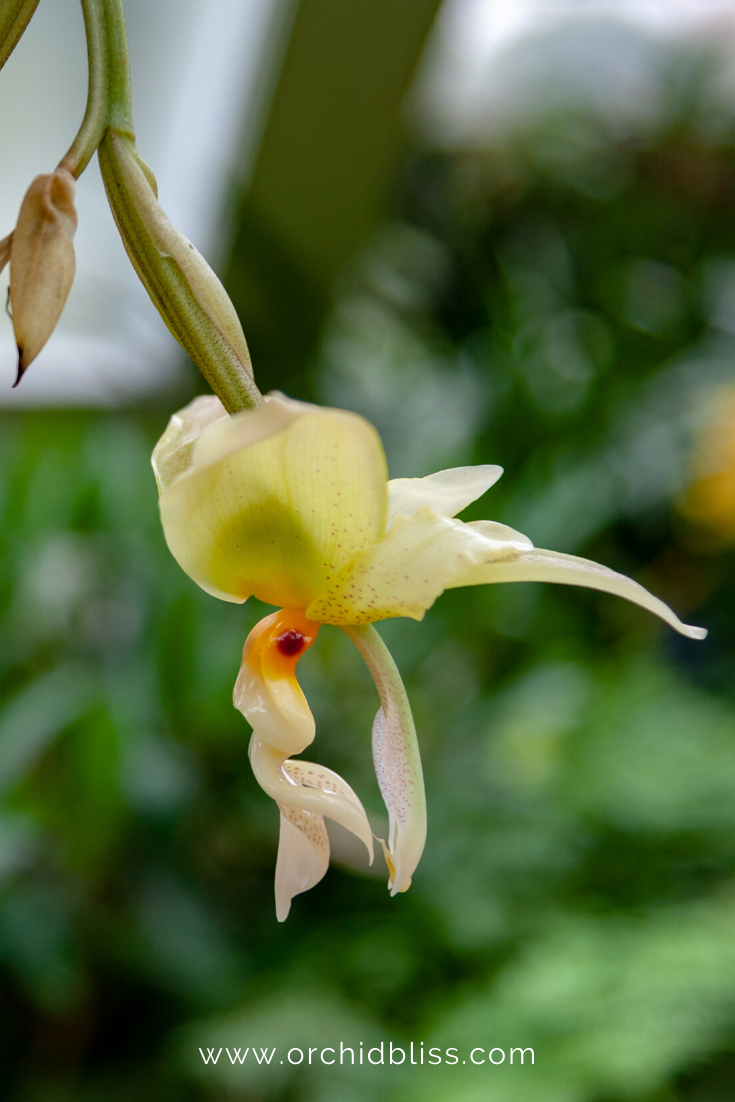
The lip of the Stanhopea resembles a female bee and is irresistible to its pollinator – a male bee. Though the flowers are short-lived they are a marvel to behold. Stanhopes are best suited for slatted baskets and mounts as the flowers hand pendulously from the plant.
- Beginner Species – Stanhopea costaricensis, S. wardii
- Distribution – Mexico, Central, and South America, Trinidad
25- Zygopetalum
zy-go-PET-uh-lum
The Zygopetalum is a good choice for windowsill growers. Enthusiasts of the Zygopetalum enjoy its intense hyacinth-like fragrance and dominant purple lip. You can grow a Zygopetalum right alongside your Phalaenopsis.
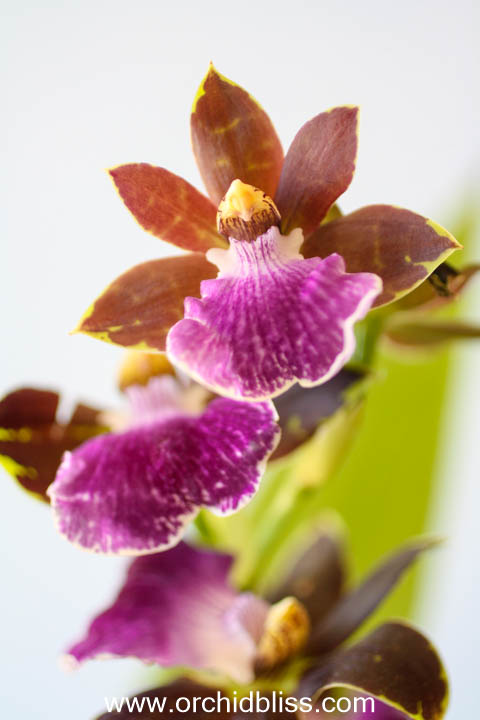
- Beginner Species – Zygopetalum intermedium, Z. mackayi
- Distribution – South America
- Care Card – To learn more about how to care for Zygopetalum orchids, CLICK HERE.
Your Turn
Now that you have some suggestions on easy-to-grow orchids, the next step is to select the healthiest plants. Check out my post on choosing an orchid.

